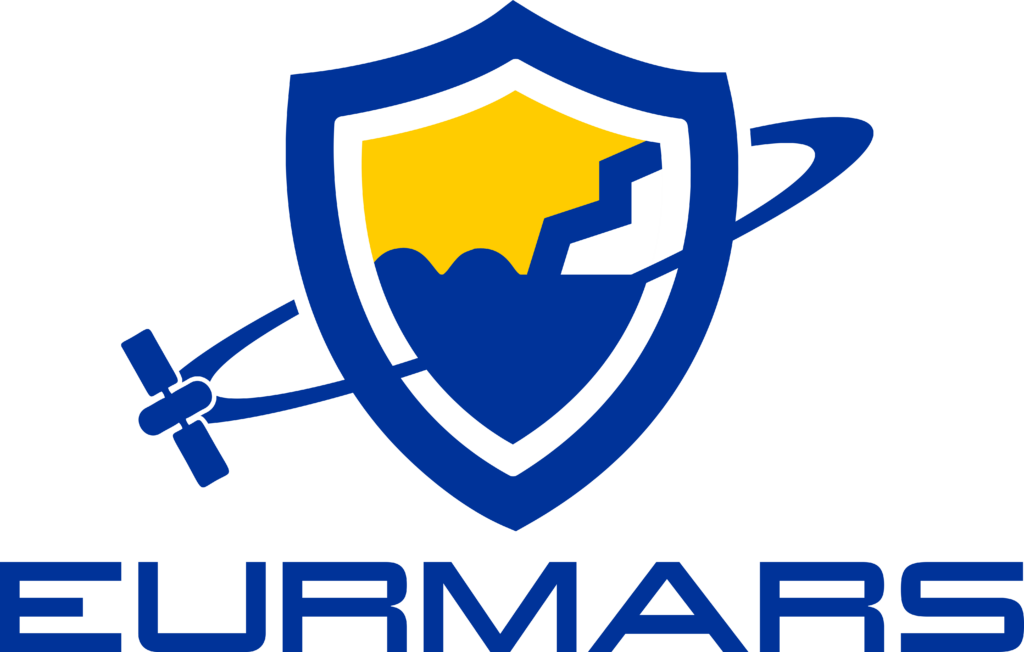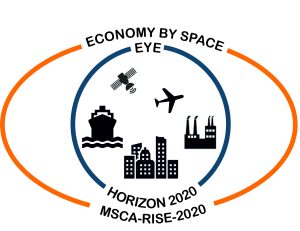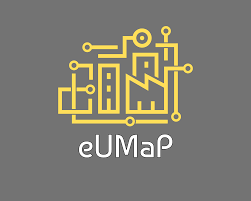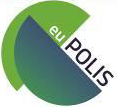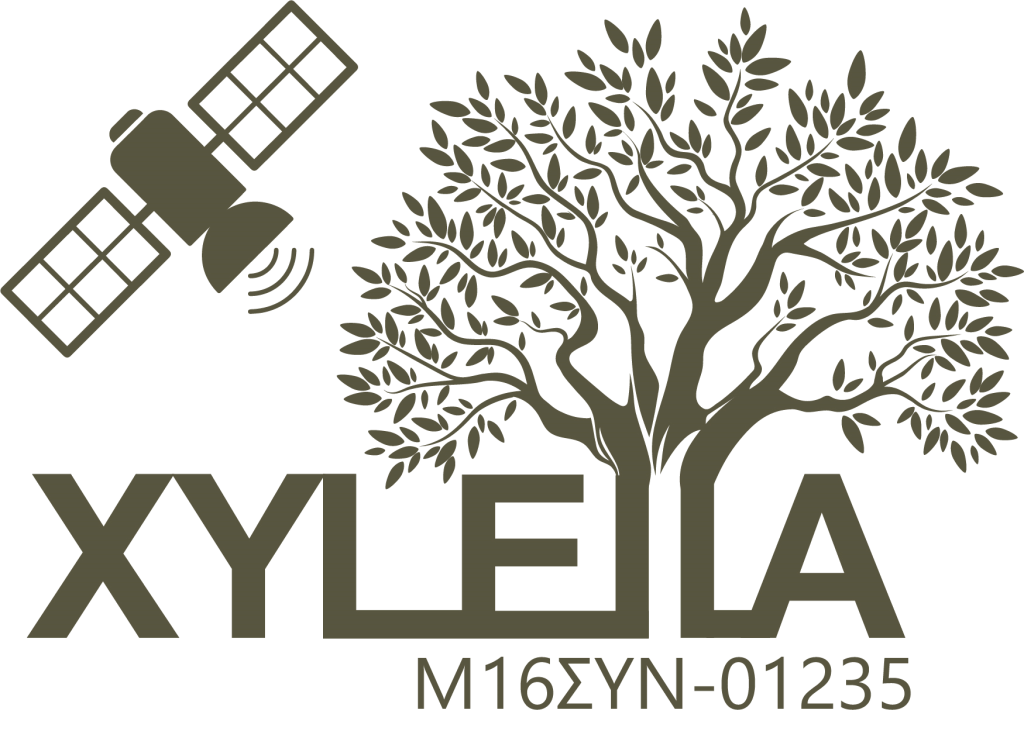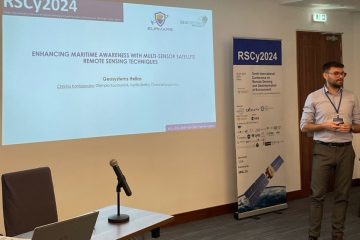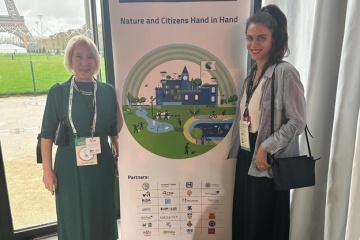Ongoing R&D Projects
Published by admin on
Ongoing R&D projects
Emergency – Security
The EURMARS project aims to develop a multifunctional monitoring platform with the goal of enhancing and facilitating both the efficiency and cooperation of multiple European authorities responsible for border surveillance. Among other things, the platform will contribute to improving risk and threat management encountered in wide border areas by combining multiple technologies, practices, and methodologies. Finally, it is worth noting that this specific project will be based on the deposit of previous related projects and initiatives, making optimal use of the knowledge and experience of all interested parties, in order to mitigate problems such as illegal immigration, drug trafficking, illegal fishing, and others.
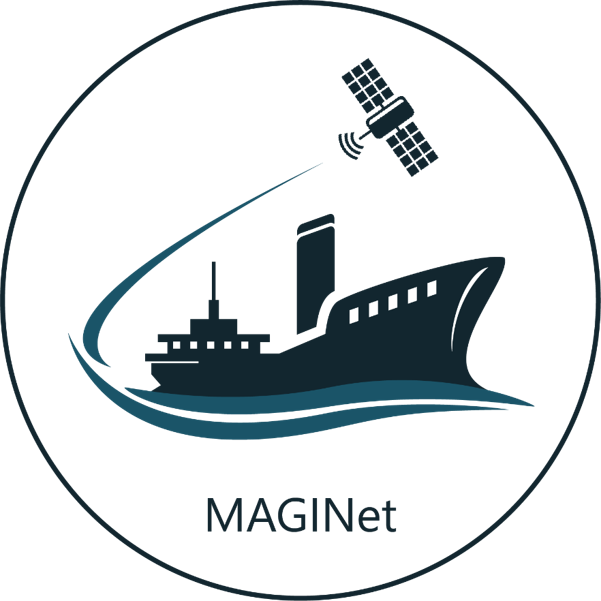
In the process to combine A.I. object detection tools with medium, high, ultra-high resolution satellite images, SAR data and RF data, it is important to use as many available sources as possible – AIS, VMS, coastal radar, airborne patrol, SAR data, etc. Most common practice in the maritime domain is the fusion of satellite images and AIS or VMS systems, mostly done with SAR images. MAGINet procedure is a new challenge with the use of video and microsatellite optical, SAR missions and RF data combined with AIS, thus ensuring the creation of a futureproof platform that incorporates state-of-the-art technologies.
Urban
Urban areas are currently facing significant new and/or aggravated existing challenges due to the impacts of climate change, including increased frequency and intensity of extreme weather events, urban greenness loss, urban flash floods, air quality degradation, and increased greenhouse gas emissions, geo-hazards, and urban heat fluxes among others. To address these challenges HARMONIA will provide a resilience assessment platform to help urban stakeholders understand and quantify Climate Change (CC) effects. In order to develop and apply the diverse methodologies and applications, four European cities are participating, Milan, Piraeus, Sofia, and Ixelles. Based on satellite and multidimensional urban context data, the HARMONIA platform will offer a user-friendly knowledge base, dispensing detailed information on a local neighborhood and building block level. This will support local decision-making and foster a wide range of applications dedicated to climate change adaptation and mitigation. Specifically, HARMONIA will focus on two types of Climate Change (CC) effects: Natural and human-made hazards intensified by CC, including urban flooding, soil degradation, geohazards (landslides, earthquake, ground deformation), heat islands, urban heat fluxes, air quality, and gas emissions.
Space technology connected with Artificial Intelligence and machine learning techniques is one of the most rapidly developing field of science and also play a key role to control disaster by space like Covid-19 outbreak. While space technologies have been successfully applied to a small number of macroeconomy and heath care related matters over the last decade, there is neither a significant utilization of space elements nor a systematic analysis of needs for space assets in this sector yet. The project EYE intends to propose a prototype service based on Copernicus data, automatic image processing supported by artificial intelligence integrated with modelling and statistic and geospatial data into an IT platform able to provide econometric and epidemiologic nowcasting and forecasting data.
Cultural Heritage
The TRIQUETRA project aims at creating an evidence-based assessment platform that allows precise risk stratification, and also creates a database of available mitigation measures and strategies, acting as a Decision Support Tool towards efficient risk mitigation and site remediation. The overall approach of Triquetra is based in three distinct steps: (i) Risk Identification, (ii) Risk Quantification an (iii) Risk Mitigation. TRIQUETRA’s data collection will provide an insight to all the variables directly or indirectly connected to CC, comparing them with historical data. New innovative surveying techniques are utilized: Hydrographic surveys, multi-beam sonars, UAVs with optical, multispectral & LiDAR sensors, underwater photogrammetry, laser spectroscopy, novel simulation models and more. By integrating all modules and technologies in TRIQUETRA, a DSS will be developed and validated in actual working conditions in 8 different pilot sites across Europe, spanning a wide range of archaeological periods, CH typology, structures and materials. The DSS will enable stakeholders and decision makers to make the most educated decisions related to risk mitigation and remediation of endangered CH sites. In addition, TRIQUETRA will develop a set of novel nanotechnology based coatings for preserving CH sites, without compromising their authenticity. TRIQUETRA will put together a Knowledge Base platform, comprising all existing methods and techniques for remediating such CH sites, while also developing novel CH protection technologies, going beyond state of the art.
Urban / Energy – Utilities
In 2020 Europe went through a very significant economic and social crisis, namely the response to the disease of Coronavirus. Over 200 million European citizens were obliged to observe restrictive measures, in some cases lock down measures, in order for governments and local authorities of the Member States of the European Union to address and limit the problem of the spread of the virus. Through this situation a number of problems emerged, one of which relates to the management of building utilities under such conditions. Specifically, in a very few days most of the activity of the European Economy shifted from the office environment to homes, leading to several problems in relation to the completeness and integrity of utilities such as power outages, water shortage and insufficient internet connection. The initiative entitled Development of Utilities Management Platform for the case of Quarantine and Lockdown – eUMaP aims to implement all those activities that will lead to the development of an open platform through which local authorities will be able to plan and manage the demand and supply of building utilities in case of quarantine or lock down.
Health
Urban areas are under huge pressure to enhance policies in order to become more sustainable and livable, as well as to provide environments and social fabric that support Public Health (PH) and Wellbeing (WB). The conventional approach to urban and revitalization planning is based mostly on profit criteria with routine methodologies, often lacking advanced integrated methods and concepts with emphasis on health, societal and environmental aspects (including Climate Change-CC). Moreover, local communities’ needs are neglected and hence cities often end up with solutions that are not embraced by local communities and citizens. To address these challenges, the HEART project aims to comprehensively address factors influencing PH&WB, provide evidence base (proven by clinical tests where appropriates) thus improve urban health and reduce health disparities through changes in individual behaviour of citizens, stimulated by different policies. This will include advanced Blue-Green (BG) based urban design, where PH, WB and environmental quality will be intrinsically built-in in all phases of planning and implementation, with strong involvement of local communities to allow them to embrace new solutions.
European cities face major social challenges due to global geopolitical, economic, climate, and other changes; this puts urban areas under a lot of stress to provide environments that support Public Health (PH) and well-being (WB). The conventional approach to urban and revitalization planning is based mostly on profit criteria with routine methodologies, often lacking advanced integrated methods and concepts with emphasis on PH, WB, cultural, economic, and societal aspects. Hence, the needs of local communities are not recognized or neglected and cities end up with costly investments that are not embraced by local communities and therefore lack sustainability. To address these challenges, euPOLIS NBS-based Urban Planning methodologies enriched with cultural and societal aspects offer the synergy of a people-centered approach with significant environmental and economic benefits of Blue Green Solutions.
Disaster Response – Nature
The Disaster Resilience Innovation Cluster – Defkalion (DRIC Defkalion) titled “Innovative Partnership for the Protection and Safety of Environmental Risks” aims to tackle climate change impacts by taking adaptation measures to mitigate its effects. Many companies today, recognizing the environmental aspects of their activities, invest in resources necessary for the adoption and implementation of an efficient Environmental Management System. At the same time, they are integrating modern technological innovations, aiming to continuously improve their environmental performance and reduce their operating costs. In this light, the Disaster Resilience Innovation Cluster DRIC Defkalion seeks to create a favorable environment for the presentation and promotion of private and public sector initiatives that promote such technological innovations in the market and solutions related with early warning of climatic hazards and disaster risk management.
The present project proposes an application aiming at the improved quality of potato production through more efficient absorption of nutrients, a pro-environmental management of important fungal pathogens ofthe crop by reducing the use of chemical fungicides. Chemical inoculation is a way of awakening the defense mechanism of plants, which have already been treated with stimulants before the presence of stress conditions. More specifically, POTATO2UP will highlight the advantages and potentials of applying environmentally friendly triggering practices to crop practices by evaluating time-focused applications of intersystemic biostimulants with trans-wave sprays for more efficient nutrient absorption with reduced chemical inputs to the potato crop of the pilotfield. To evaluate the time-focused applications of chitosan hydrochloride acting as an activator of plant defense mechanisms for a more environmentally friendly management of important fungal pathogens. Finally, remote sensing technics will be implemented, which has shown promising results for monitoring the physiological status ofplants in the pilot field.
The project aims to detect the pre-visual stages of infection of olive trees affected by the bacterium Xylella fastidiosa (Xf) using satellite data and Remote Sensing technics. With the use of the abovementioned, it can be monitoring the possible infection of olive orchards by Xf and also can be exploited as a tool to study and understand the spread of the bacterium Xf.
Services
Information gathered from satellites or in-situ sensors, available at a distance, has opened up a wide range of qualitative services. With eoMALL as your platform, you can explore and discover online services, compare offerings from different providers, and easily access the selling points. Whether you choose to freely explore eoMALL without registration or customize your experience by registering, you gain the ability to contact companies and access the selling points. Currently in beta release, eoMALL is continuously expanding its functionalities, so registering will keep you informed and up-to-date. Developed by the European Association of Remote Sensing Companies (EARSC) with the support of the European Space Agency (ESA), eoMALL aims to promote European companies delivering online services. By using eoMALL, you not only benefit from additional relevant services but also contribute to the growth and success of European companies.
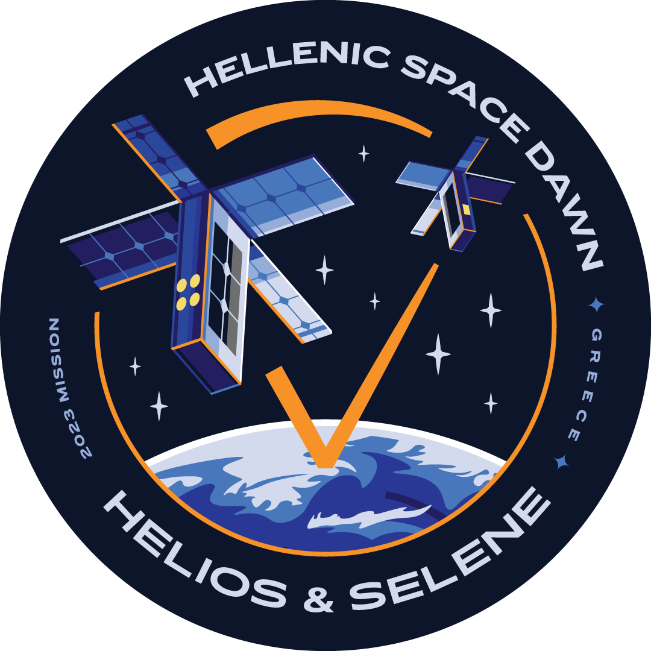
Geosystems Hellas (GSH) together with EMTEC Space P.C., ISD S.A., ΗΕRON Engineering, LEO Photonics, AUTH, UoA and HNA, are creating the first Greek CubeSat twin constellation SELENE and HELIOS (CubeSat for Earth monitoring, high-Level Mission instrument), the Hellenic Space Dawn (ESA ITT AO/1-11498/22/UK/ND). The project partners design, build, test, launch and operate the two HS-DAWN cubesats (CubeO-1 και CubeO-2). The two cubesats carry Remote Sensing imaging instruments for Earth observation, and have a capability of 5 times a day revisit and 1 night-time acquisition.
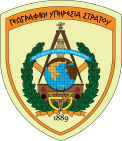
GSH, in collaboration with COSMOS , carries out the project “Digitization of the Chronological Archive of Aerial Photographs of the Hellenic Military Geographical Service – Development and Provision of Digital Services” of the Action: “Digitization of the Chronological Archive of Aerial Photographs of the Hellenic Military Geographical Service – Development and Provision of Digital Services”, with OPS Code 5049399 of the OP “Public Sector Reform 2014-2020”, contracting authority INFORMATION SOCIETY, with the supply of 2 photogrammetric scanners, 20 integrated photogrammetry software systems and 10 integrated SAR data processing software systems of HEXAGON, as the sole reseller in Greece and Cyprus.
